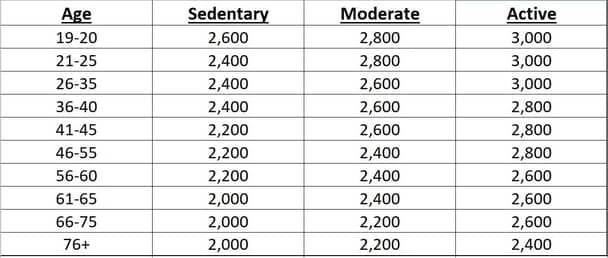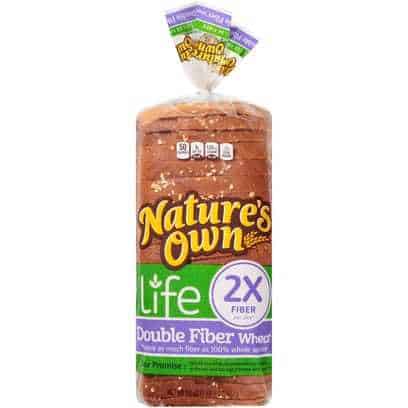I love bread. I also love the feeling of being lean and muscular. It’s a dilemma I’ve had to deal with my entire life. Fortunately, I’ve found a way to enjoy bread while also staying in shape.
No, bread is not bad for you when trying to lose weight. Weight loss occurs by creating an energy deficit (burning more calories than you eat). As long as the total calories you consume is less than you burn, you can eat bread and still lose weight.
So, what does that mean? How much bread can you eat while still ensuring your body is in an “energy deficit”?
Unfortunately, the answer to this question is not a one size fits all. The amount of bread you can consume, daily, depends on how many calories your body requires to maintain its current weight.
The chart below will give you a pretty good idea of what your estimated calorie needs are. I’ve also provided a detailed breakdown of the difference between white bread and whole wheat bread as it relates to weight loss.
How much bread should you eat a day to lose weight?
There is a great deal of comfort that comes from knowing I can eat bread and still hit my weight loss goals! But, how much bread am I allowed to have?
Let’s get specific!
The amount of bread you should eat a day to lose weight depends on how many calories your body needs to maintain its current weight. Someone who needs 2000 calories per day, and wants to lose 1 lb per week, should consume no more than 1500 calories in a single day (from bread, or any other foods).
To elaborate on that, there are 3,500 calories in 1 pound of fat. If you were to achieve a 500 calorie/energy deficit each day, you would lose about 1 pound of fat per week (500 calories x 7 days = 3,500 calories).
As long as the amount of bread you consume doesn’t exceed the amount of calories you burn, you’ll lose weight.
That said, it’s extremely unhealthy for the bulk of your calories to come solely from bread. Making sure your diet is well-balanced has a variety of implications on how successful you’ll be at losing weight, and keeping it off.
Take a look at the following chart to get an estimate of how many calories your body needs each day to maintain its current weight.
Men:

Women:

Using the chart above, I’ll give you a real world example of a more realistic approach.
A 30 year old man who is moderately active requires about 2,600 calories a day to maintain his current weight. For him to lose weight he’d need to eat less than that.
So, let’s say 2,000 of those calories come from a well-balanced diet (fruits, vegetables, whole-grains, lean protein, etc.). If he were to have 2 large slices of white bread (about 79 calories each) he’d still be able to achieve about a 400 calorie deficit for the day.
Over time, with consistency, he’d lose weight.
Having said that, it’s a good idea to consider other things besides calorie intake when looking to lose weight. The type of bread you’re consuming can also make a difference.
Which bread is good for weight loss?
While calorie restriction is the only way to successfully lose weight, there are other factors that can accelerate, or inhibit, your ability to shed those unwanted pounds.
For example, the type of bread you consume seems to have an impact on weight loss as well. Bread with higher concentrations of fiber or bread with the addition of cellulose have been shown to help dieters eat less by making them feel fuller.
There are so many different brands and styles to choose from, though…
So, which bread is good for weight loss?
The best bread for weight loss is bread that’s both low in calories and high in fiber. Low calorie bread will help you achieve a calorie deficit, while the fiber will help satiate you. Nature’s Own Double Fiber Wheat is a good bread for weight loss with only 50 calories and 4g of fiber per slice.

There are a variety of great bread options for weight loss, though. Just make sure to check the nutritional facts before buying and use moderation when eating.
Is white bread good for weight loss?
Deciding on a good bread to eat while trying to lose weight can seem intimidating, especially given how many options there are. It’s really not that complex though, nor is it very important, to be honest.
From purely a calories standpoint, white bread is the best bread for weight loss. Compared to other breads, like wheat or rye, it has slightly fewer calories which translate to a greater calorie deficit (i.e. more weight lost).
Now, there is a caveat to that…
While white bread has less calories than many other breads, it also has less fiber. One of the benefits of fiber, in terms of weight loss, is its ability to keep the body satiated.
The benefit from that, as you can probably imagine, is you’re more likely to eat fewer calories throughout the day which can support your weight loss goals.
The reason why I say the bread you choose isn’t that important is because the difference in both calories and fiber isn’t all that significant. At least not significant enough to make a huge difference.
Is whole wheat bread good for weight loss?
If you’ve already done some research, you’ve likely heard whole wheat bread is your best bet for weight loss. The reality is there isn’t much of a difference.
Compared to white bread, whole wheat bread may be the better choice for weight loss. While whole wheat bread has slightly more calories, it also has more fiber. Fiber has been shown to improve the breakdown of starches, prevent glucose spikes, and keep you satiated longer, all of which support weight loss.
Again, weight loss at it’s core requires energy deficiency (consuming less calories than you burn). Regardless if you’re eating white bread, whole wheat bread, or bread pudding, you still need to eat less calories than your body uses.
Don’t overthink it! Keep an eye on your calories and you’ll be fine…
Is rye bread good for weight loss?
Another question I get asked a lot is if rye bread is good for weight loss. Similar to the white vs wheat debate, it’s not that important nor is it going to make much of a difference.
That said, I’d say there is a slight advantage to eating rye bread when it comes to weight loss.
Rye bread, compared to white and whole wheat bread, seems to be a good choice for weight loss. While there are only minor differences between the three, rye bread tends to have more fiber and provides more micro-nutrients, especially B vitamins, which can assist with weight loss.
Be careful when eating rye bread though, as it’s usually denser and can be easier to over-consume than white and whole wheat bread.
Conclusion
At the end of the day, there isn’t one food or ingredient that’s going to sabotage your weight loss goals. However, moderation is key to effective, long-term and sustainable weight loss.
When it comes to bread, specifically, you can absolutely include it in your diet and still lose weight. Just make sure to watch how much bread you’re eating on a daily basis.
The goal with any weight loss diet is achieving an energy deficit (calorie deficit). And, the best way to do that is by eating slightly less and exercising more.
Check the chart above to get an estimate on your daily caloric needs and subtract from there. Starting slow is usually more sustainable, too. Big changes in the body don’t happen overnight…
Lastly, don’t overthink which bread is the best for weight loss and which bread you should avoid. There isn’t a huge difference! Monitor your intake and portion size, get some exercise, and drink plenty of water. The results will come, I promise!
Good luck, family!
